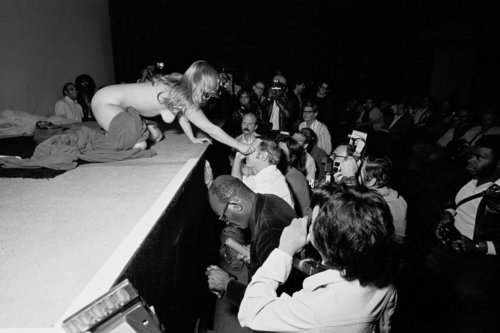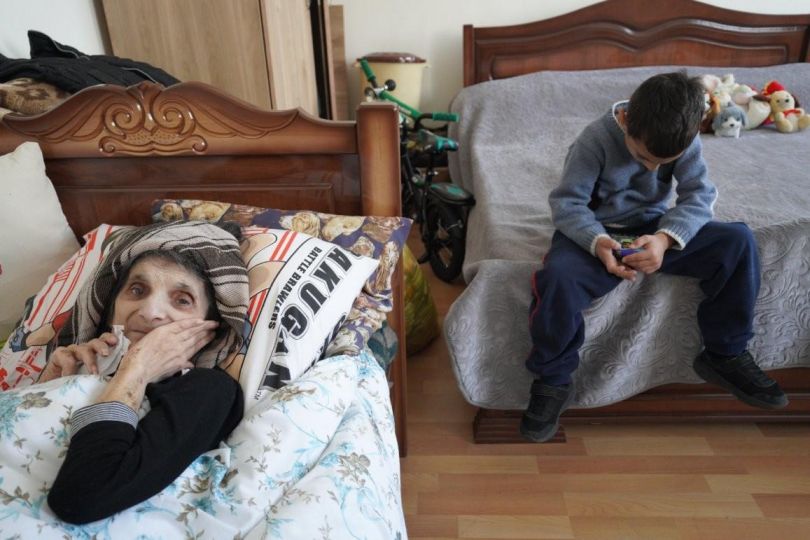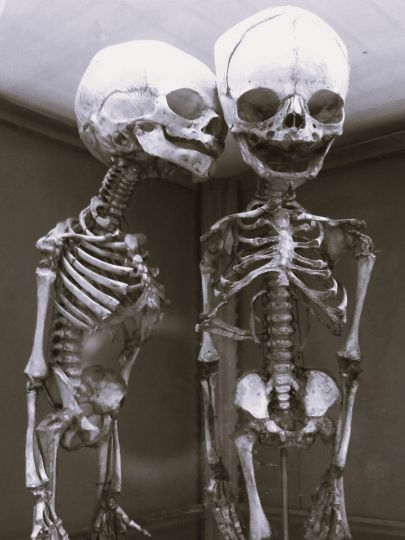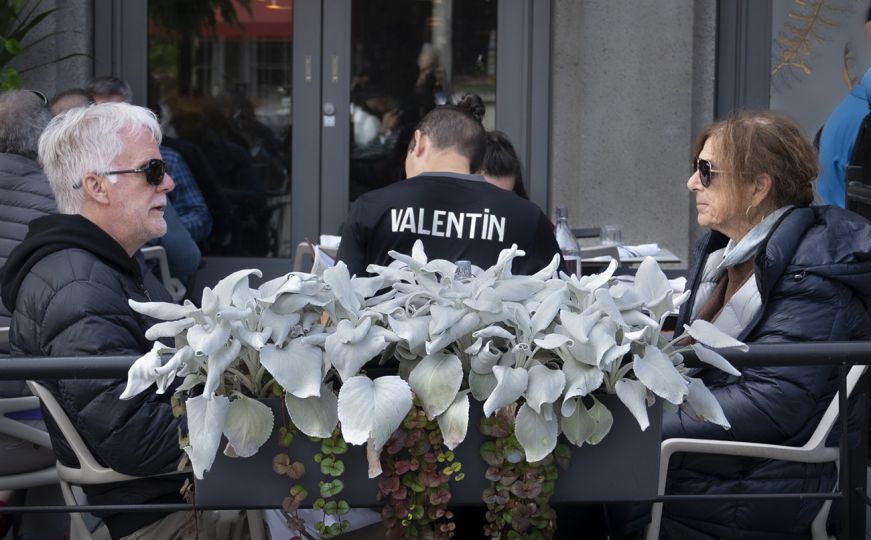Starting in the 1980s, Chicago-based photographer Michael Abramson was a highly respected freelance photographer for national magazines, but during the 1970s he established himself as a gifted documentary photographer. Since just before Abramson’s death in 2011, his earlier work is now being rediscovered and appreciated for their historic and artistic value. Abramson’s B/W photographs of Chicago’s south side night clubs are especially recognized as important. In fact, his documentation of the underground funk/blues/early disco scene of the 1970s is often compared to Brassai’s nocturnal Paris of the 1920s.
Abramson’s vintage photographs are on display in two critically acclaimed mixed-media publications. In the more recent one, Gotta Go, Gotta Flow (2015), his south side shots are individually paired with lines of slam poetry, the text of which perfectly captures the energy and reflects the emotional sentiment of the accompanying image. The author of these poems is the award winning African American New writer Patricia Smith, who actually grew up in Chicago and well remembers her father going out to the same south side clubs in the photographs.
Six years earlier in 2009, the renowned recording company Numero Group released a combination LP / photography book entitled Light on the South Side (with an Introduction by Nick Hornsby). The nearly 100 photographs are sized the same as two LPs in a striking box set. The genuine intimacy of the mostly African American patrons featured in the photographs make it clear that Abramson, who was white, didn’t just visit the south side clubs once or twice but was a regular sojourner to them, in fact over a three-year period. These photographs put on vivid display the exuberant fashions of the day and joyous, almost delirious atmosphere of the clubs, themselves. Even drag shows in the not-queer friendly space of the mid-1970s are documented as are the outdoor shots of the clubs’ facades, and flamboyant vehicles in which some of the patrons arrived. What marks the LOTSS package as unique, though, is that its two LPs feature the blues music that (theoretically) was playing in the lively clubs during that time. Because LOTSS was released as a musical recording, it was nominated for a Grammy in the category of Best Packaging, a rarity for photography.
It should be noted that Abramson was not unaware of his position as a white man photographing a black scene. He once acknowledged how the camera gave him the necessary license to do what he did. He further observed of the scenes he witnessed at the clubs, “Whether through gesture, dress, or conduct, the night people seemed to transform rather barren surroundings into a living self-contained theatre, where everyone was part of a sensational show. They portrayed a very special nocturnal world existing unto itself. I had walked into a timeless place, full of supporting actors and actresses of every conceivable role.”
Across town and in the whiter neighborhoods of Chicago’s Northside and surrounding suburbs, Abramson chose for his next project the visually arresting life of the fading ballroom culture. In places like the Aragon Ballroom (built in the 1920s), a very different, more classical evening scene unfolded. Photographed in an almost surreal and oddly angled manner, Abramson shows us as perhaps a privileged voyeur dancing denizens in a strange light in more formal suits, traditional-looking jewelry, and outdated stylized bouffants.
Within these two highly contrasting milieus, Abramson managed to document and display the extravagant behavior and characters of that era in all their black and white glory – literally, in the segregated City of Chicago. Looking at the B/W images through the lens of today, we see a bygone period era, a time before labels limited and defined the demographics of bars and clubs, and from which only now are we starting to break free.
In addition to Abramson’s south side clubs and north side ballrooms, Abramson visited a Chicago strip club at one of its monthly held “Camera Night” events. For a small fee, men, and they were always men – both black and white, were invited to bring their cameras to photograph the strippers before the actual shows began. Like the other men there, Michael did take intimate shots, both behind the scenes and on the stage, of the strippers practicing their special moves. After a while, however, it occurred to him to turn his lens onto the photographers themselves. And for that gesture he was chased out of the clubs when the others caught wind of what he was doing!
Today it is clear that from the youngsters at heart jiving on the south side dance floors, to the angular shots of the couples gyrating in a retro ballroom to women displaying absolutely everything for a voracious sea of men, Michael Abramson provided us a rare glimpse into the late-night theater of human behavior during the seventh decade of 20th Century America.
Federico Hewson and Midge Wilson
Federico Hewson is a writer, curator, and activist currently based in Berlin, Germany. Midge Wilson is the Director of the Abramson Arts Foundation and Manager of the Abramson Estate.
















